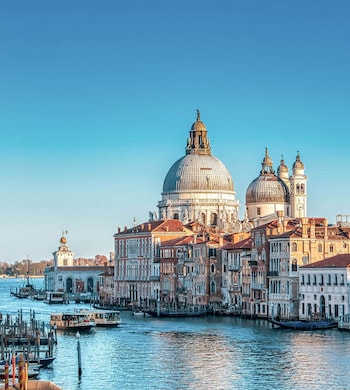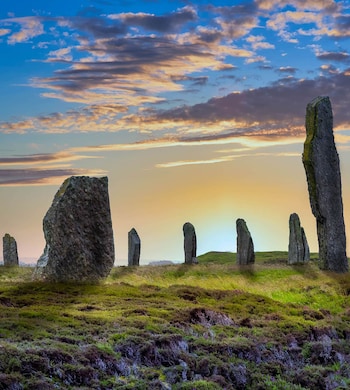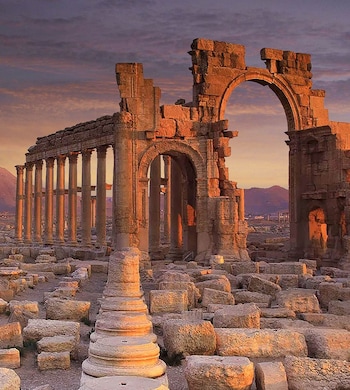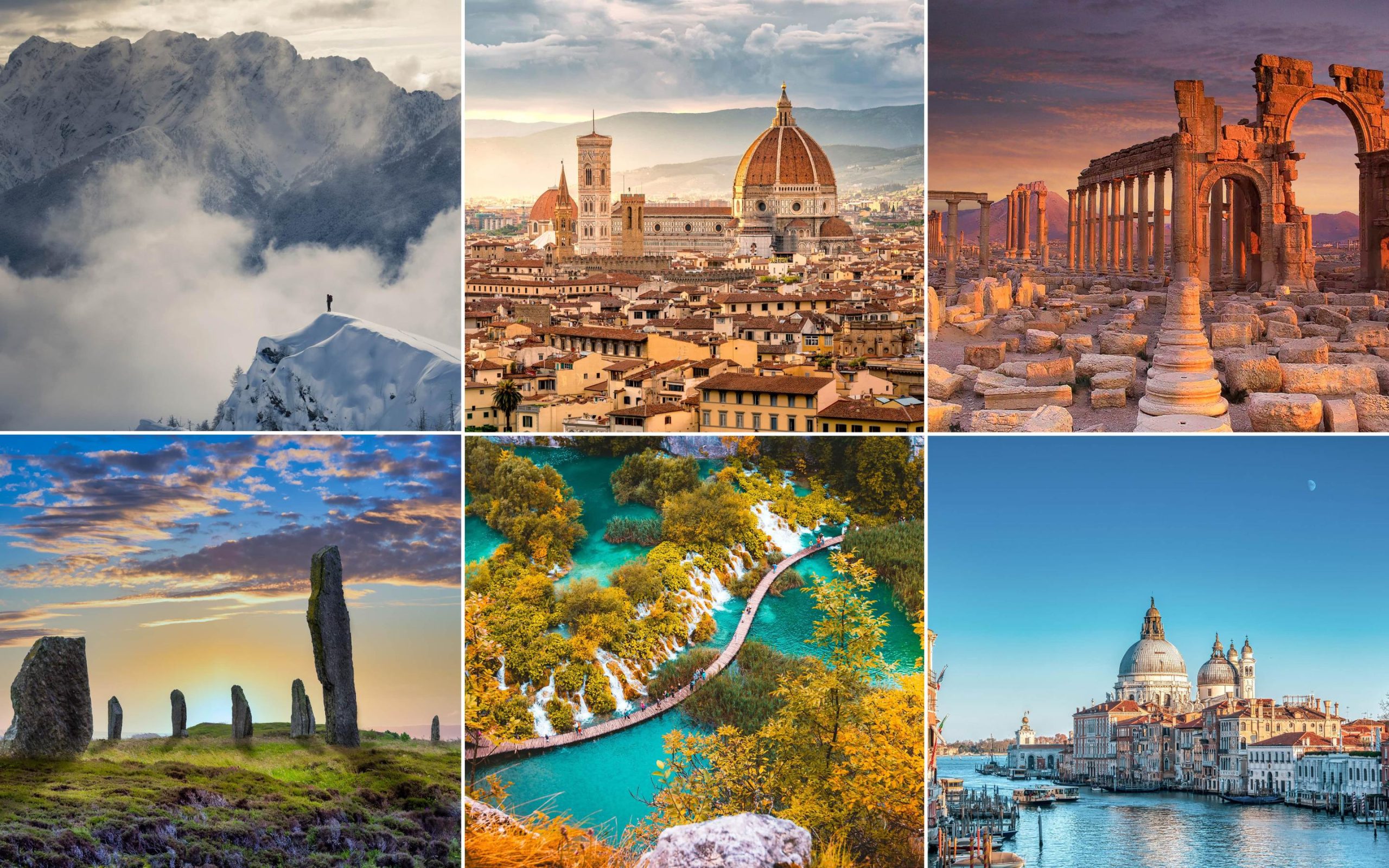In 2023, 42 new sites were inscribed to Unesco’s list of World Heritage Sites. From the prehistoric structures of Talayotic on Menorca and war memorials along the Western Front in France and Belgium to the silk roads of Tajikistan, Turkmenistan and Uzbekistan and the Old Tea Forests of Jingmai Mountain in China’s Pu’er city, the list has extended its variety and diversity with the largest number of new entries in 20 years.
In November 1972, at a meeting in Paris, the General Conference of Unesco adopted the World Heritage Convention, a commitment to protect natural and cultural assets across the globe. Six years later, the first World Heritage Sites were ratified. Stretching across seven countries, the 12 sites included the Galapagos Islands, Yellowstone National Park and the centre of Krakow.
Fast-forward over 50 years and the number of Unesco-listed sites has ballooned. There are now 1,199 of them, ranging from swathes of ancient forest to frescoed Renaissance churches and situated in 168 countries. In 2023, to celebrate the organisation’s 45th meeting, delegates met in Riyadh, Saudi Arabia, to select the latest additions to the list (for 2024, delegates will meet in New Delhi, India in July).
Back in 1978, it would have been entirely possible for those with enough time and money to tick off all the Unesco listings in the world (although it might have been unwise to visit Ethiopia, home to two of them and in the midst of a brutal civil war). Now, sifting through the ancient relics, national parks, city centres and an increasing number of ‘dark tourism’ sites to find out which are worth visiting is an almost impossible task. With this in mind, we’ve looked at some of the best – and worst – of them below.

Venice’s Grand Canal, at sunset
Credit: Dario Argenti / Getty Images
Despite being relatively small, Italy has a site for every week of the year and more, ranging from the culturally important (the Historic Centre of Florence and Pisa’s Piazza del Duomo) to the scenically unmatched (the sun-soaked speckles of the Aeolian Islands and the steepled peaks of the Dolomites). With 59 of the things – including one new addition in 2023 – the country just beats China to the top of the table (57).
The latter’s profusion of monuments is partly explained by its vast size. Listed attractions stretch across the country from Tibet’s Potala Palace fortress to the pyramid-like tombs of Koguryo on the border with North Korea. 2023 saw the addition of the Old Tea Forests of the Jingmai Mountain in Pu’er close to the border with Myanmar. They’re so far apart that it would take more than two and a half days of continuous driving to reach one from the other.
Europe, on the other hand, makes a great place to mooch between the monuments (of which there are more than 400, by far the most on any continent). Though it’s home to some of the world’s most visited and historic attractions (including the memorial sites of the First World War along the Western Front in France and Belgium which made the list in 2023), it’s also the place where you’ll find lesser-populated countries with more World Heritage Sites per capita than either China or Italy.
Croatia and Bulgaria (with ten apiece) are among them, with attractions including the pools and waterfalls of Plitvice Lakes National Park (Croatia) and the 3,000-year-old city of Nessebar (Bulgaria), with its museum-like hodgepodge of an Old Town complete with cobbled streets, Byzantine churches, ancient walls and 18th-century timbered houses.
But it sometimes seems as though, for every site with protected status, there’s another one resolutely left off the lists – and there are 28 countries with no World Heritage Sites at all. Bhutan, where monasteries cling to the jagged landscape and centuries-old ways of life continue in misty valleys thronged by black herons, has so much visible history that you bump into it at every turn – but absolutely none of it has Unesco recognition yet (though there are eight places on a Tentative List of sites nominated for inclusion).
It’s a disparity that the World Heritage Centre’s Director Lazare Eloundou Assomo hopes to rectify. “This is going to be our priority in future,” he says, “because the list, though it remains very prestigious, is still not representative of the diversity of all the countries of the world”.

The Ring of Brodgar is a Neolithic stone circle on the Orkney island of Stromness
Credit: Carl Remmin / Getty Images
From the Tower of London to the Neolithic tombs and stone circles of Orkney, the UK has a respectable 33 World Heritage Sites, with nine currently on the tentative list. There used to be more but in 2021 Liverpool lost its listed status after Unesco struck it off, citing developments on the city’s waterfront and a “serious deterioration” of the protected area (English Heritage first raised concerns in 2012).
It means there are now five listed places in the north of England, including one woefully under-visited frontier of the Roman Empire. Only 112,000 people per year make it to Housesteads Roman Fort, reputedly the busiest stop-off along Hadrian’s Wall (though that may be set to change thanks to a governmental cash injection and rumours that more will be made of its Games of Thrones link).
Five sites in the West Country see significantly more tourists, with millions visiting Dorset and East Devon’s evocatively-monikered Jurassic Coast every year. Scotland, too, has an impressive scattering, including Edinburgh’s Old and New Towns and the spidery scarlet construction of the Forth Bridge.
But four of Great Britain’s World Heritage listings aren’t strictly in the UK at all (at least not geographically). Remote islands in the Pacific and Atlantic help make up the numbers, as do the once Neanderthal-inhabited Gorham’s Cave Complex in Gibraltar and the rainbow-painted town of St George in Bermuda.
According to worldatlas.com, Beijing’s Forbidden City is the world’s most visited Heritage Site, with almost 15 million people thronging its courtyards and galleries every year. But while other big name attractions such as Venice’s Lagoon and the Tower of London can be full of crowds, there are some sites where you’ll barely see another soul.
Ethiopia, which has 11 of Africa’s 103 listed attractions (two new in 2023), sees less than a million tourists every year and is home to the fabled Rock-Hewn Churches of Lalibela, carved out of the Earth in the 12th and 13th centuries. Sadly though, at least one of the country’s sites is currently out of bounds due to civil unrest, with the situation constantly evolving according to the Foreign, Commonwealth and Development Office (FCDO). Meanwhile, there are eight countries with World Heritage Sites that the governmental body advises not to visit at all, including Ukraine, Yemen and Iran.

An Ethiopian Orthodox priest pauses at the Church of Bieta Maryam
Credit: Christophe Boisvieux / Getty Images
As the name indicates, it’s also almost impossible to visit Inaccessible Island which, along with its neighbour Gough Island, forms one of the UK’s listings. Part of an overseas territory lost in the South Atlantic, its harbour opens for just a handful of days per year and is only reachable from Tristan de Cuhna (itself a seven-hour sail from Cape Town). In return for an arduous journey and the need to secure permission from the local government, visitors get a pristine landscape untouched by invasive species and busy with endemic creatures such as the Inaccessible Rail (the smallest flightless bird in the world).
Slightly easier to visit are the handful of new World Heritage Sites in countries just opening up to tourism. Among them, the vast citadel of At-Turaif, a terracotta-coloured sprawl at the heart of the ancient capital of the First Saudi State, which lies northwest of Riyadh and made the list in 2010: It finally opened to the public in late 2022. Then there’s the virgin forest of Gabon’s Ivindo National Park, home to the thundering waterfalls of the Chutes de Koungou as well as elephants, gorillas and red river hogs (but only explorable by foot or boat).

Before the Syrian conflict started in 2011, more than 150,000 tourists visited the city of Palmyra every year
Credit: Nick Brundle / Getty Images
The ones we’ve lost – and may lose
Though none of Ukraine’s eight listed properties have so far been destroyed in the current conflict, World Heritage is monitoring the situation with satellites. Earlier in 2023 the Historic Center of Odesa on the Black Sea coast was added to both the long list and the list of World Heritage in Danger under an emergency procedure. In their latest meeting, the committee chose to place two other Ukrainian sites on the danger list: Kyiv’s Saint-Sophia Cathedral (inscribed in 1990), and the city of Lviv, which was founded in the late Middle Ages and is the largest city in western Ukraine.
War can have a devastating impact on a country’s most precious historical monuments which in turn affects already fragile morale. Eloundou Assomo knows this from his work in Mali, where he was once Unesco’s head representative. “The extremists were destroying the heritage in order to control the communities and transform them into something else,” he says. “Destroying cultural heritage was not only destroying stones, it was also destroying the identities of the people”.
In the final years of the last decade, Isis ravaged many historical sites across Syria and Iraq on the basis that they promoted the worship of false idols. Palmyra, the ancient city that has stood in the desert of modern-day Syria for five millenia, lost many of its temples, graves and monuments in 2015. Almost 15 years earlier, Afghanistan’s sixth-century stone giants, the Buddhas of Bamiyan, were destroyed by the Taliban. Both sites are now on Unesco’s ‘World Heritage in Danger List’, a 52-strong collection of properties that urgently require conservation.
Conflict isn’t the only issue facing the world’s most precious monuments though. Many more are beset by environmental pressures. Deforestation is threatening the Río Plátano Biosphere Reserve in Honduras while water quality and wildfires are affecting the fragile ecosystem of the USA’s Everglades National Park, for example.
“The studies we have conducted show that almost one third of World Heritage Sites are already affected by climate change,” says Eloundou Assomo. “It’s going to be one of the biggest challenges in the coming years and, if there is no policy put in place, if there is no proper monitoring system, if this issue is not really tackled seriously, many World Heritage Sites may disappear”.
Despite these ongoing threats, only three places across the globe have ever lost their World Heritage Status – and neither war nor environmental pressures were to blame. As well as the aforementioned Liverpool, Germany’s Dresden Elbe Valley was delisted in 2009 after a four-lane bridge was built to ease traffic congestion. Two years previously, Oman’s Oryx Sanctuary became the first place to ever be struck off, after its site was reduced by 90 per cent following the discovery of oil, leaving a dwindling population and just four breeding pairs of oryx within its borders. A fourth site, Georgia’s Bagrati Cathedral, has been partially delisted.

A lone hiker contemplates the journey ahead at Valle Formazza, Piedmont, Italy
Credit: Buena Vista Images / Getty Images
Over half a century since its creation, World Heritage is now focused on some very 21st-century problems. With 47 per cent of its sites in Europe, “what we want to do is to ensure that countries that have not been given a chance, or that have not had the opportunity to submit their candidature for one of their natural sites to cultural sites, to be given this opportunity,” says Eloundou Assomo.
Sustainable travel is also top of the agenda. “If [World Heritage status] doesn’t improve the living conditions of local communities, if it doesn’t help to protect their rights, then we’re not serving the purpose for which the World Heritage List was established,” he explains.
This story was first published in September 2023 and has been revised and updated.










